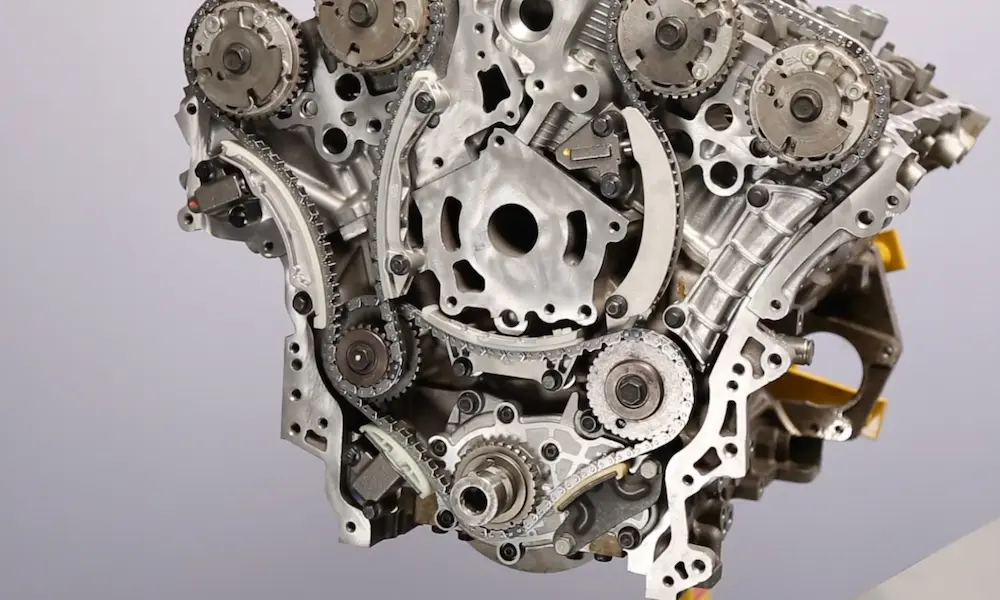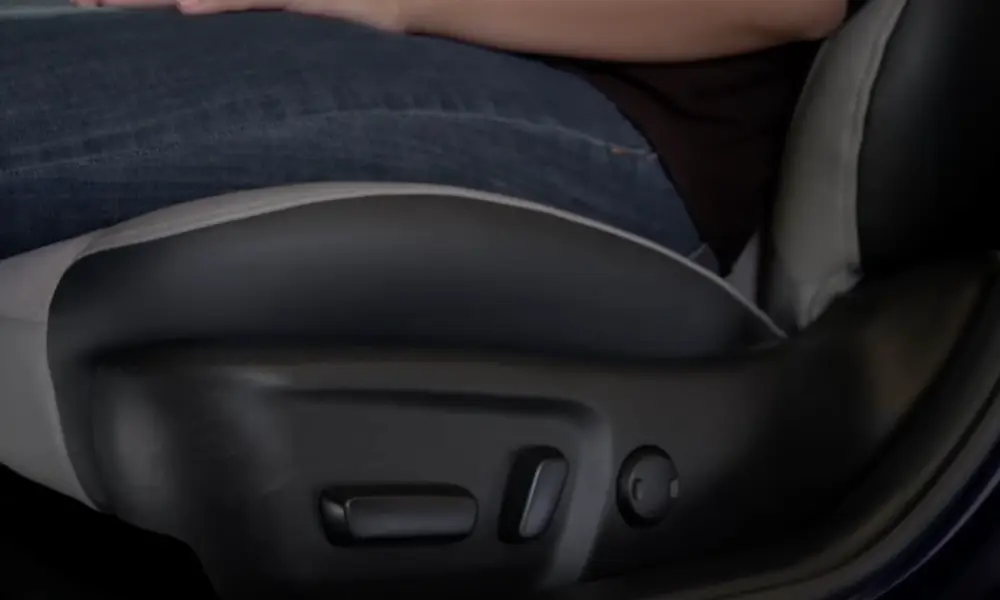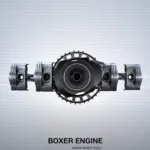Experiencing issues with your GM integrated trailer brake controller can be frustrating, especially when you’re on the road. The good news is that many of these problems have known solutions that might just solve your issue. Discover common troubles and learn what steps you can take to address them, ensuring a smoother towing experience. Dive into the details to regain control and confidence on your journeys.
Understanding the Integrated Trailer Brake Controller (ITBC)
The Integrated Trailer Brake Controller (ITBC) in GM vehicles enhances towing safety by providing precise control over trailer brakes. It’s an essential component in GM models such as the Chevy Silverado and GMC Sierra, where it seamlessly integrates with the vehicle’s systems.
Overview of ITBC in GM Vehicles
In GM vehicles like the Chevy Silverado and GMC Sierra, the ITBC plays a crucial role in towing. It connects directly to the truck’s systems, giving you control over the trailer’s brakes through a dedicated dashboard interface. This integration helps in maintaining stability and control. GM’s ITBC is especially prominent in models equipped with heavy-duty capabilities, such as the GMC Sierra 2500, providing a smoother towing experience.
The Role of ITBC in Safe Towing
Safety during towing is paramount, and the ITBC serves as an important feature for this purpose. Its main job is to apply the right amount of brake force to the trailer, depending on your braking input. This helps in reducing swaying and maintains better vehicle control, especially during emergency stops or downhill driving. With the ITBC, you get a system designed to respond efficiently to changing road conditions, ensuring that both the trailer and truck stay aligned while towing.
Integration with GM Trucks’ Systems
GM trucks like the Suburban and models on the GM T1 platform have advanced integration features for the ITBC. They work by detecting when a trailer is connected, automatically adjusting the vehicle’s settings to accommodate additional towing needs. This includes calibrating braking responses and ensuring the vehicle’s onboard computers communicate effectively with the trailer. Such integration not only improves towing performance; it enhances the overall driving experience by making it more intuitive and seamless for the driver.
Common ITBC Issues and Symptoms
When using a GM Integrated Trailer Brake Controller (ITBC), you might encounter various issues. These can include warning messages, unresponsive brakes, connection problems, and false error signals. Being aware of these common symptoms helps in diagnosing and resolving these issues before they affect your towing experience.
Service Trailer Brake Warnings
You may see a “Service Trailer Brake” warning on your dashboard. This alert often indicates a problem within the ITBC system. It can be triggered by faulty wiring or a malfunctioning module. To fix this, start by checking the wiring for any visible damage or loose connections.
The service trailer brake message can also occur if the trailer is not properly connected. Ensure all the connections are secure before driving. Regular maintenance can prevent these warnings from becoming recurring issues in your vehicle.
Unresponsive Brake Pedal When Towing
If you notice an unresponsive brake pedal while towing, it could be due to insufficient brake pressure. The integrated system must detect your trailer for the brakes to work effectively. Inspect the brake controller’s settings and ensure the gain is adjusted correctly.
Testing the brake pressure when the vehicle is stationary can help you identify whether the brake pedal issue is intermittent or constant. Take your vehicle to a professional for a thorough inspection if the problem persists. Keeping the brake components in good condition is essential for ensuring towing safety.
Problems with Trailer Brake Connections
Problems with trailer brake connections can lead to numerous ITBC issues. Poor connections between the vehicle and trailer are common culprits. Inspect the plugs and sockets for dirt or corrosion, as these can disrupt the electrical signals needed for proper brake function. Regular cleaning of the wiring harness connections helps maintain smooth operations.
If the connections are loose or worn, replace them immediately to prevent further complications. Consider using dielectric grease to protect the connections from moisture damage in wet conditions. By ensuring all connections are secure, you can prevent a significant number of common ITBC issues.
False Short to Ground Errors
False short to ground errors can appear unexpectedly, causing the trailer brakes to stop working. This issue may arise from faulty wiring or damaged components in the brake control circuitry. To diagnose, check for any signs of frayed wires or compromised insulation. Use a multimeter to test for voltage inconsistencies.
If repairs don’t resolve the issue, you might need to replace parts of the trailer brake controller. These errors can cause significant inconvenience if not addressed promptly, so regular inspections and maintenance are advisable. By keeping your wires and components in good shape, you minimize the risk of false errors interrupting your journeys.
Repair and Maintenance Solutions
In dealing with GM’s integrated trailer brake controller issues, you might find certain technical tasks necessary. These involve checking service bulletins and programs, replacing specific modules and fuses, and addressing any corrosion on connectors.
Service Bulletin and Customer Programs
It’s a good idea to check for any relevant service bulletins and customer satisfaction programs. GM sometimes releases special service bulletins to address common issues with the trailer brake control system. These bulletins might provide free repairs or discounted services.
If your vehicle qualifies, participating in these programs can save you money and ensure your brake system functions properly. Keep your vehicle’s VIN handy for inquiries at a GM dealership.
ITBC Module and Fuses Replacement
Replacing the integrated trailer brake controller (ITBC) module and related fuses can solve many system problems. If your trailer brake control module is faulty, it can cause significant issues like ineffective braking.
Begin by checking the under-hood fuse block for any blown fuses related to the trailer brake system. Users have reported finding success after replacing faulty fuses. Replacing the ITBC module itself may also be necessary, but always consult a professional mechanic for these replacements.
Addressing Corrosion on Connectors
Corrosion on electrical connectors is a common problem that affects the trailer brake system. It can interrupt the flow of electrical signals, causing the system to malfunction.
To address this, inspect your connectors for any signs of rust or buildup. Use appropriate cleaning products to remove any corrosion, ensuring the connections are secure and free from dirt. Regularly maintaining these connectors can help prevent future issues and keep your brake system running smoothly.
Trailer Brake Controller Customizations
Customizing your trailer brake controller can make towing safer and smoother. You can adjust the brake pressure or add an aftermarket controller to fit your needs. Below, you’ll find how to tweak these options for a better towing experience.
Adjusting Brake Pressure Settings
Fine-tuning the brake pressure settings on an integrated brake controller can prevent harsh stops and ensure a smooth ride. You might find the perfect setting by testing different levels. Start by gradually increasing or decreasing the pressure while driving in a safe, open area.
Make sure to consult your vehicle’s manual. It often provides specific instructions for your model. Remember, you want enough pressure to stop the trailer but not so much that it causes abrupt halts.
It’s essential to adjust settings based on your trailer load. Heavier loads may require higher brake pressure settings, whereas lighter ones will need less. If your vehicle has a P3 brake controller, this could offer more precise adjustments, as it typically comes with detailed options for customization.
Installing an Aftermarket Brake Controller
If your integrated system doesn’t meet your towing needs, consider an aftermarket brake control. These can enhance your braking system’s capabilities. Before purchasing, research different models to find one that fits your towing setup.
Installation usually involves connecting the controller to your vehicle’s wiring. You can do this yourself or hire a professional for peace of mind. Some popular choices include the P3 brake controller, known for its user-friendly interface and reliable performance.
After installation, follow the manufacturer’s guidelines to calibrate the system. Ensure the controller is mounted within easy reach to make on-the-fly adjustments when necessary. Adjust settings based on your specific towing needs for optimal performance.
Frequently Encountered ITBC Error Codes
When dealing with integrated trailer brake controllers (ITBC), understanding error codes can save you a lot of trouble. These codes often point to issues within the system, such as wiring problems or faults in the trailer brake control module (TBPM). Being aware of the common codes and their meanings is key to troubleshooting effectively.
Decoding the RPO Code JL1
The RPO code JL1 identifies vehicles equipped with an integrated trailer brake controller. If your vehicle has this code, it features factory-installed trailer braking systems that are prone to certain common issues.
Error codes that pop up often relate to connectivity or calibration. For instance, wiring problems between the TBPM and the trailer might trigger a fault. Ensuring clean connections, especially at the 7-way receptacle, can prevent errors. Some users report issues with the controller not detecting the trailer, which could lead to brake activation problems.
When diagnosing issues, remember that a bi-directional scan tool helps to read internal codes from the Body Control Module (BCM). This makes troubleshooting much more manageable and addresses specific problems linked to the trailer brake control module.










